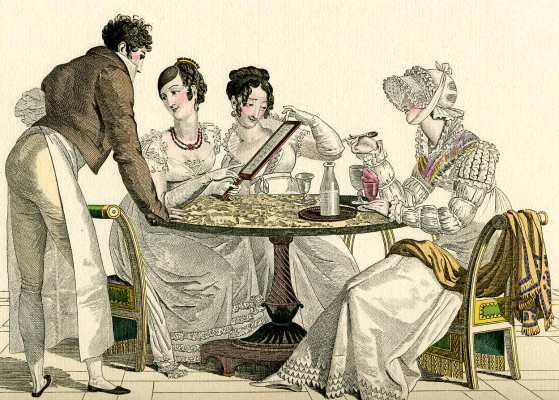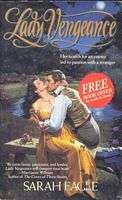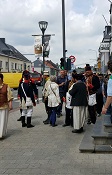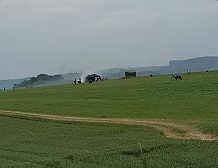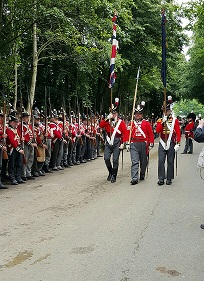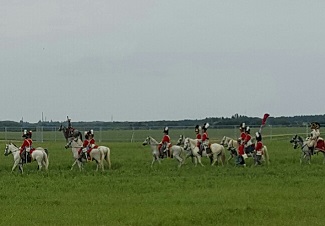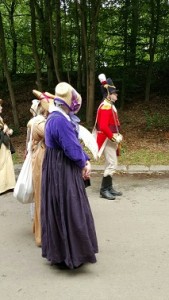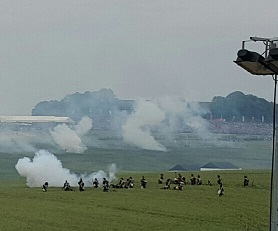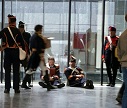As I’m preparing my first two novels for re-release, I’m reminded of all the research I did while I was writing those first books for Dorchester and exploring the Regency period at the same time. In Bewitched, I had my hero and heroine buy presents for the hero’s family, and for some reason, I thought it would be an excellent idea if they bought snuff for his brother. And so I happily dived into all things to do with snuff…

By the Regency era, snuff had become the preferred choice of tobacco in the fashionable world and had largely replaced pipes and cigars. In this, the beau monde followed the example of dandy extraordinaire Beau Brummell, and what’s more, he also dictated how snuff was to be taken: According to Brummell, only one hand should be used to open one’s snuff box and transfer the snuff to the nose. To take a pinch of snuff in an offhand manner—even better: in the middle of a conversation!—without glancing at either snuff or snuff box and, most importantly, without grimacing, was considered the highest art. If you were clumsy or if you took too large a dose, you ran into danger of dribbling the snuff down your neckcloth or, even worse!, to stain your nose. (And now let’s all imagine a romance hero with… On second thought, let’s not.) (Ugh!)
Snuff-taking was an expensive habit—not only did the prices for snuff ran high, but the substance also had to be carried around in a suitable container: the snuff-boxes of the rich were pieces of intricate workmanship. The lids were often decorated with miniatures—some of them innocent, some of them… err… less so. (The latter were sometimes hidden on the inside lid or behind a sliding cover.)
The collecting of snuff boxes became a rich man’s hobby, and again, Beau Brummell was leading the fashion. According to his biographer William Jesse, among the boxes Brummell owned was one particularly intricate container: “His passion for snuff-boxes was extreme: he had one which he only could open, and some friend of his, while he was at Belvoir, tried it with his pen knife, with the intention, no doubt, of purloining his snuff, which was always excellent. Hearing of the outrage, Brummell said, ‘Confound the fellow; he takes my snuff box for an oyster.'” (from The Life of George Brummell, Esq.) (There are also slightly different versions of this particular anecdote.)
Indeed, you didn’t just share your snuff with anybody. Sharing snuff acted as a marker of favor and a sign of friendship: “If you knew a man intimately,” Gronow writes in Recollections and Anecdotes: A Second Series of Reminiscences (1863), “he would offer you a pinch out of his own box; but if others, not so well acquainted, wishes for a pinch, it was actually refused. In those days of snuff-taking, at the tables of great people, and the messes of regiments, snuff-boxes of large proportions followed the bottle, and everybody was at liberty to help himself.”
Snuff was provided in dry or moist versions, many of which were scented as well, with jasmine, orange flowers, musk roses, or bergamot. It came in different colours, ranging from yellow to brown, black or even purple. Detailed descriptions of different kinds of snuff can be found in Arnold James Cooley’s Cyclopaedia of Six Thousand Practical Receipts (1851):
“Among some of the most esteemed French snuffs are the following:—Tabac de cedrat, bergamotte, and neroli, are made by adding the essences to the snuff.—Tabac perfumée aux fleurs, by putting orange flowers, jasmins, tube-roses, musk-roses, or common roses, to the snuff in a close chest or jar, sifting them out after 24 hours, and repeating the infusion with fresh flowers as necessary. Another way is to lay paper pricked all over with a large pin between the flowers and the snuff.—Tabac musquée. Any scented snuff 1lb.; musk (grown to a powder with white sugar and moistened with ammonia water) 20 grs.; mix.”
(My hero & heroine eventually bought tabac de neroli.)
PS: Oh gosh, I’ve just discovered that back in 2006, there was a film about Beau Brummell based on Ian Kelly’s biography. With James Purefoy as Brummell and Matthew Rhys as Lord Byron. *swoons*
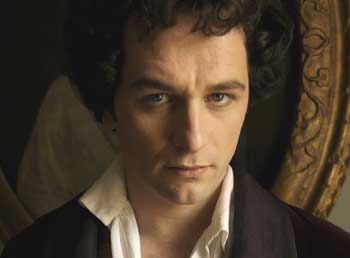 *swoons again*
*swoons again*
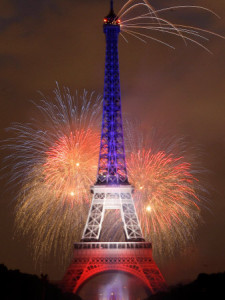 Or rather, happy day before Bastille Day, since July 14 is the time to celebrate the day in 1789 when an angry mob stormed the prison and released scads of prisoners–well, 7 anyway. It was officially declared a national holiday on July 6, 1880. It’s a good excuse to spend your weekend drinking champagne, eating wonderfully unhygenic cheese, wearing berets, and listening to “La vie en rose” over and over (it’s MY excuse, anyway, though really every day is a good day for champagne and Piaf!)
Or rather, happy day before Bastille Day, since July 14 is the time to celebrate the day in 1789 when an angry mob stormed the prison and released scads of prisoners–well, 7 anyway. It was officially declared a national holiday on July 6, 1880. It’s a good excuse to spend your weekend drinking champagne, eating wonderfully unhygenic cheese, wearing berets, and listening to “La vie en rose” over and over (it’s MY excuse, anyway, though really every day is a good day for champagne and Piaf!)
